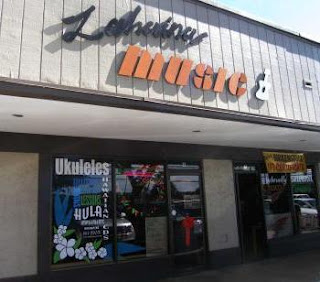Greetings!
I do not consider myself to be a big Bruce Springsteen fan, and have never seen him perform in person. However, I do have a lot of his music in my collection and think that his recent Wrecking Ball album is some of the fines work he has ever done. So, these things led me to the Honda Center in Anaheim California this past Tuesday, so I could finally get a chance to see his live show and it was quite a bit better than I had ever dreamed it could be.
There was no opening band, just Bruce Springsteen and his E Street Band. There were a few guest stars, but more on that later. He was joined on stage by the usual suspects: Nils Lofgren on guitar, Gary Tallent on bass, Mad Weinberg on drums, Little Steven on this and that, Roy Bittan on keys, an assortment of other characters on horns, percussion, fiddle, and lastly, Jake Clemons on the saxophone. He is Clarence Clemons’ nephew and is a very good player, but man oh man those are some big shoes to fill. By the way, Patty Scialfa was nowhere in sight.
The show was supposed to start at 7:30, but the usher told me 8:15 and the band did not come on until 8:30, and by then the crowd was really ready. I have seen plenty of major acts over the years, but I have never heard a buzz or felt the excitement of the crowd like I did when Bruce came on stage. I imagine that this must have been what it was like when Elvis would come on stage, because his fans are rabid and love love love Bruce. The lady in the seat next to me told me that she had seen over 300 of his shows, and I believed her. I could never do a bad review of this show, because his fans would hunt me down and kill me.

Fortunately I do not have to give a bad review because he really puts on a show! I know he is in his early sixties, but he has the energy and stamina of a man half his age, and he plowed through a 3 ½ hour show (no intermission) with gusto. His voice is as strong as ever, and his guitar and harmonica chops are quite impressive. Plus, I noticed that he did not use Teleprompters, unlike Aerosmith and Rush, who I also saw in the past month. I don’t know how he can remember all of those lyrics and chord changes.
They left the lights up for the first song, “The Land of Hopes and Dreams,” and thanks to his distinctive posture and movements I instantly recognized that Tom Morello was on stage too. The Rage Against the Machine guitarist collaborated on Wrecking Ball with Bruce, so I guess it is not a big stretch that he would drive across town to join in for the show. He was on and off the stage during the evening, and probably played on 5 or 6 of the 28 songs that the band performed that evening.
Anyway, it was apparent that Bruce loves connecting with his fans and he worked the crowd like the professional that he is. He told some funny anecdotes, shared his feelings on the loss of his friend Clarence, and the recent destruction of his beloved New Jersey coastal community. Fortunately he never turned political and preachy, which is the last thing I want when going to a concert to have a good time.
Springsteen walked out into the floor crowd and then jumped out and let them carry him around. The Boss would read the posters his fans brought, and collected a few and then took requests. He played a perfect solo acoustic version of “Long Time Comin’” and the rest of the band joined him for “Reason to Believe.” My god these guys are a tight band and their professionalism shone through in everything they played.
Another local guest performer showed up and gave a rousing rendition of Social Distortion’s “Bad Luck.” And that would be none other than Mike Ness from Social D, which I don’t think is a twist that anybody saw coming. It is a sign of how important that Bruce and his music are that he is joined onstage by such diverse guest musicians.
The the time the set ended with “The Ghost of Tom Joad,” “Badlands” (both with Morello) and Thunder Road, I was exhausted. But there was a little bit more to come. For the encore, Bruce Springsteen and the E Street Band cranked out “Jungleland,” “Born to Run”, “Dancing in the Dark,” “Santa Claus Is Coming to Town” and “Tenth Avenue Freeze-Out.” This would be almost a whole set for another band, but it was business as usual for these guys as they did these songs just as strong as their opener.
Though I went into the concert with no real expectations, I have to say that now I understand what his fans are saying, and that Bruce Springsteen is truly a living legend and the poet of his generation. Every musician and music fan needs to see one of his shows, so they can see how great a show can be.
Mahalo!























































